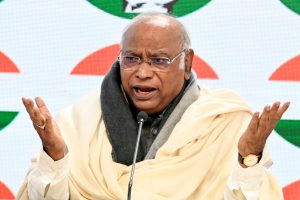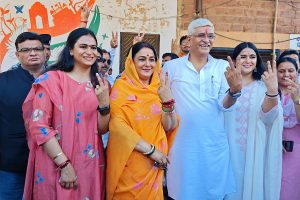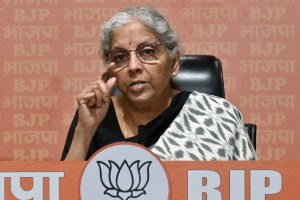Education is the most controversial of subjects. Parents quarrel about the quality of education for their kids, just as societies are deeply divided on education as it defines the future. Is the current education system fit for the purpose of coping with a more complex, fractious future, fraught with the possibility of war?
According to Stanford University’s Guide to Reimagining Higher Education, 96 per cent of university chief academic officers think that their students are ready for the workforce, whereas only 11 per cent of business leaders feel the same. As the population and workforce grew, the gap between skills demanded by employers and education received by the school leavers is widening, so much so that many are finding it hard to get the jobs that they want.
As technology accelerates in speed and complexity, the quality of education becomes more important than ever. Is it for the elites or the masses? The Greek philosopher Aristotle recognized that the aim of education is for knowledge, but there was always a different view – was knowledge for the individual or was education expected to prepare the individual to fulfil the needs of society? Feudal systems hardly paid attention to the masses, whereas most ancient institutes of higher learning were for elites, either for religious orders or in Chinese history to prepare for civil or military service but blended with self-cultivation.
Conservative think tank American Enterprise Institute (AEI) has just produced a fascinating study on the implications of higher education for national security. Cover- ing the period 1950 to 2040, the study acknowledged that the United States attained uncontested power status because it had the highest levels of educational attainment and manpower. In 1950, the United States with less than 5 per cent of the world’s population had a 45 per cent share of the world population aged 25-64 with completed tertiary education.
By comparison, India had 5 per cent and China about half that. By 2020, the US’s share had dropped to roughly 16 per cent, whereas China was catching up, whilst India had just under 10 per cent. By 2040, depend- ing on different estimates, China may double her share to between 15 and 20 per cent, whereas India would have overtaken the US with 12 per cent leaving the US third with 10 per cent.
It is a truism that education matters for economic growth and power. Every additional year of schooling for children is estimated to add a 9-10 per cent increase in per capita output. If you add in “business climate” with improvements in education, health and urbanization, these factors explain five-sixths of differences in output per capita across countries. Under the liberal world order, America encouraged the spread of global education, so much so that the global adult illiteracy (those without any schooling) fell from 45 per cent in 1950 to only 13 per cent by 2020.
This worldwide expansion in education was good for the world, but it also reduced the comparative advantage of the education and technology front-runners, particularly the United States. The AEI study reported that the share of the global adult population with at least some tertiary education increased from under 2 per cent in 1950 to 16 per cent today and would approach 22 per cent by 2040. In 1950, eight of the top 10 largest national highly educated working-age labour pools were in advanced countries. By 2020, their share was half. By 2040, this is likely to be only three out of ten. In essence, India and China would take the lead in total highly trained manpower, especially in science and technology, with the US “an increasingly distant third-place contestant.”
The AEI study illustrates why increasingly American universities will be more selective in their future foreign student intake, especially in science and technology which may have an impact on national security matters. As late as 2017, MIT manifested global ambitions in its strategic plan: “Learning about the world, helping to solve the world’s greatest problems, and working with international collaborators who share our curiosity and commitment to rigorous scientific inquiry.” That global vision may be cut back in light of the growing geopolitical split into military blocs. Western universities may no longer be encouraged to train foreign students in areas where they can return to compete in key technologies.
In short, the geopolitical rivalry will determine the future of resources allocated to education, research and development and technology. No country can afford liberal education in which every student is encouraged to do what he or she wants to do. Students today want to be more engaged in big social issues, such as climate change and social inequality, but at the same time, expect more experiential immersion into careers that are more self-fulfilling. Instead, institutes of higher learning are forced by economics to provide shorter-term courses to upgrade worker skills, using new teaching methods and tools, especially artificial intelligence, virtual reality etc. At the national level, governments will push universities into more research and development and innovation to gain national competitiveness, including R&D in defence and national security sectors.
This means that the education pipeline or supply chain will also be bifurcated like global supply chains that are being disrupted and split by geopolitics. The conversation on what should go into the curriculum for education is only just beginning. Much of this is to do with funding. As higher levels of education are more expensive, especially in the high technology area, whilst governments’ budgets are constrained, universities will turn to private sources of funding. The more society polarizes, the more likely that such funding would turn towards the entrenchment of vested interests, rather than solutions to structural problems.
Education is controversial precisely because it is either a unifying social force or a divisive one.
One thing is clear. Whilst the quantity of educated manpower is critical to national strength, quality may matter more. The Soviet Union had the second-largest share of educated manpower during the Cold War, but it did not save the Union from collapse. Will our future education system provide leaders who are able to cope with the complexities of tomorrow?
As the poet, TS Eliot asked in his poem “The Rock” in 1934, “where is the wisdom we have lost in knowledge?” That question is being asked not just in universities, but by society as a whole.
(The writer is a Distinguished Fellow, Asia Global Institute, University of Hong Kong and a former financial regulator. Special to ANN.)










